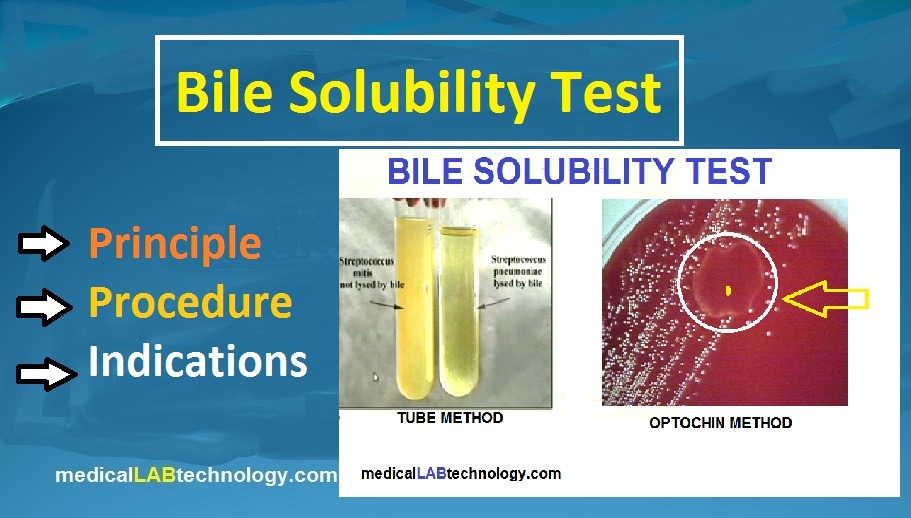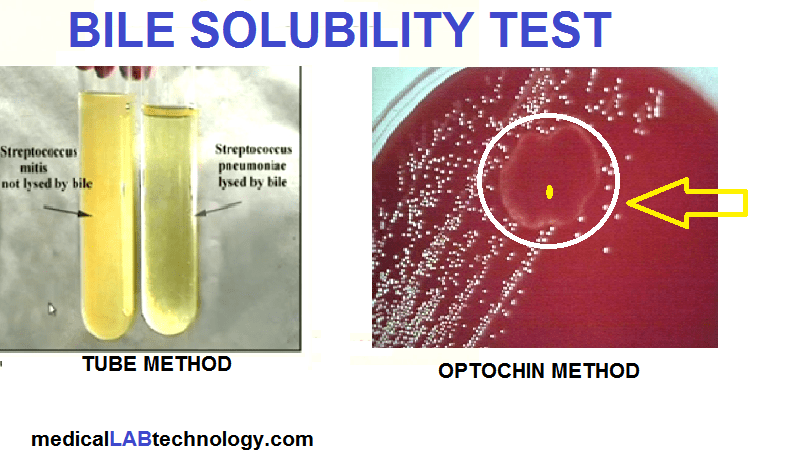The Bile solubility test is important for the identification of Streptococcus pneumoniae from Viridans types of other streptococci.
Principle of bile Solubility test
Some bacteria (Strept Pneumoniae) have an autolytic enzyme that autolyzes the broth culture within a few days. while other alpha-hemolytic bacteria are resistant to bile.
Bile Solubility test reagents and media
- Na2CO3 anhydrous
- water
- Pancreatic Extract
- Chloroform
- Hydrochloric Acid (Concentrated)
The procedure of the bile Solubility test
- Inoculate the test organism in serum broth for 24 hours at 37 C.
- On the next day add 0.5 ml deoxycholate solution.
- Incubate for 15 minutes at 37 C.
- Read the test. If the test is positive, the turbidity of the suspension will disappear.
Bile solubility test vs optochin test
Optochin is impregnated disk, placed in the middle of the colony on the agar plate. This disk clears the colony of strep pneumonia around itself but it does not affect the colony of the other bacteria.
On the other hand, in the bile solubility test, an autolytic enzyme of strep pneumonia autolyzes the broth.
Bile Solubility test positive bacteria
Strep Pneumoniae has a hydrolase enzyme, therefore it is causes hydrolysis and bile solubility test-positive bacteria.
Bile Solubility test Negative bacteria
Strept agalactia is a bile solubility test-negative bacteria.
Rat us

